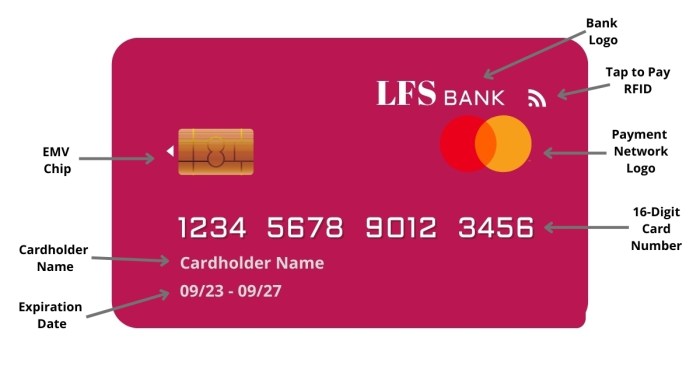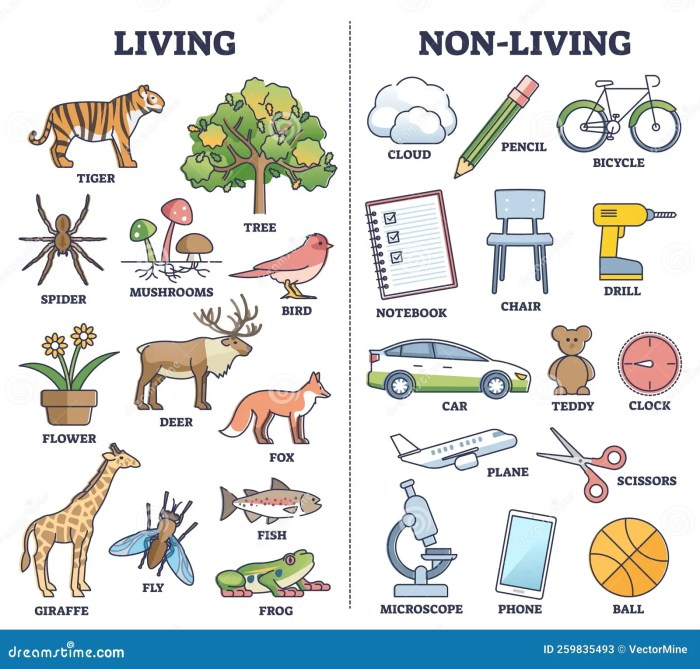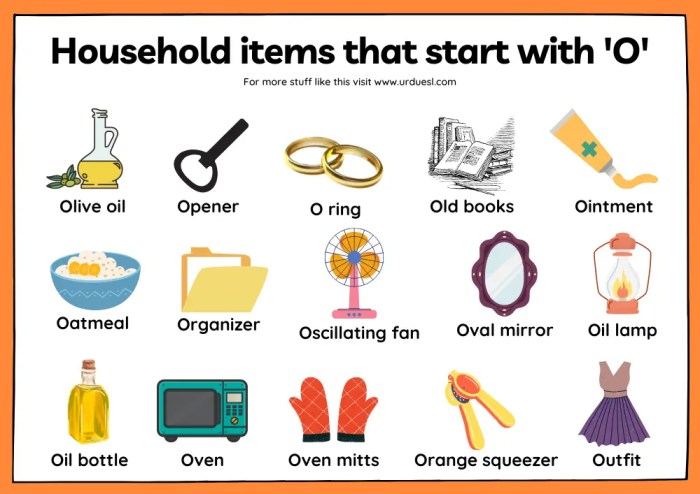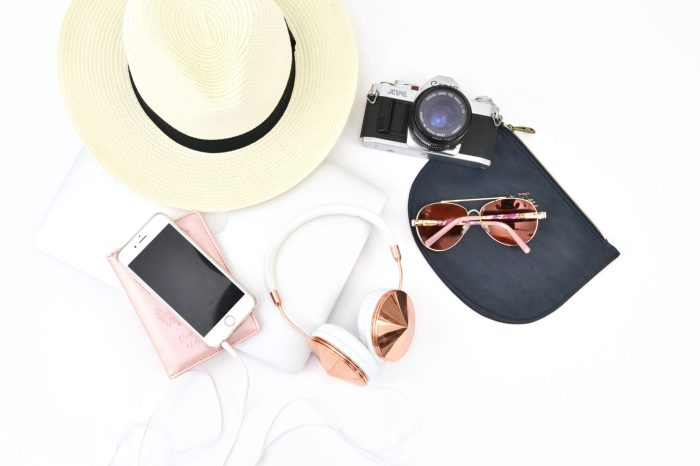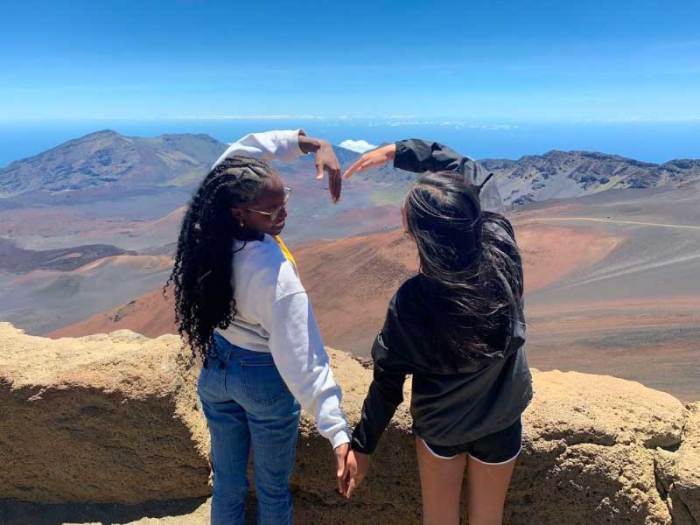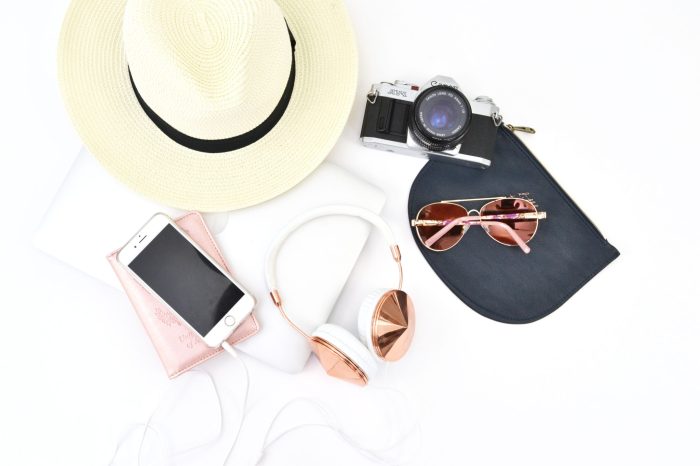Beach vacation packing list sets the stage for a memorable trip. From essential clothing for swimming and sunbathing to the perfect beach accessories and must-have electronics, this comprehensive guide will equip you with everything you need to plan a stress-free and enjoyable beach getaway. We’ll cover everything from swimwear to sun protection, and even how to pack sustainably, so you can relax and soak up the sun, worry-free.
This detailed guide breaks down packing essentials into categories, like clothing, accessories, personal care, and electronics. We’ll explore packing strategies, including tips for efficient packing and the best ways to organize your belongings. Whether you’re a solo traveler, a couple, or a family, we’ll help you tailor your packing list to your specific needs and the destination. Discover how to create a personalized packing checklist for a beach vacation that caters to your preferences and the unique aspects of your trip.
Beach Accessories and Gear
Packing for a beach vacation involves more than just swimwear. The right accessories and gear can elevate your experience, ensuring comfort, safety, and enjoyment throughout your trip. From shielding yourself from the sun to maintaining personal hygiene, careful planning is key to a memorable beach getaway.
Sun Protection Essentials
Sun protection is paramount when spending time at the beach. A wide-brimmed hat, sunglasses, and high SPF sunscreen are crucial for preventing sunburn and long-term skin damage. Remember to reapply sunscreen frequently, especially after swimming or sweating. UV-protective clothing, like rash guards or long-sleeved shirts, offers additional protection from the sun’s harmful rays.
Beach Essentials
Essential beach gear includes a beach towel, a beach bag, and a reusable water bottle. A beach towel should be absorbent and durable, while a beach bag should be spacious enough to hold all your belongings. A reusable water bottle ensures hydration throughout the day, preventing dehydration, especially during prolonged sun exposure. A portable beach umbrella or a beach tent offers shade and protection from the sun, allowing you to relax and enjoy the beach.
Comfort Items
Beach comfort items are just as important as other necessities. Consider packing a beach chair, a portable cooler for drinks and snacks, and a beach umbrella for shade. These items can greatly enhance your beach experience, making it more enjoyable and relaxing. Comfortable sandals or water shoes are also essential for walking on the sand or entering the water.
Beach Towel Comparison
| Type | Absorbency | Weight | Price |
|---|---|---|---|
| Microfiber | Excellent | Lightweight | Moderate to High |
| Cotton | Good | Moderate | Moderate to Low |
| Bamboo | Very Good | Moderate | High |
This table compares common beach towel materials based on their absorbency, weight, and price. Microfiber towels are lightweight and highly absorbent, making them ideal for quick drying. Cotton towels offer a good balance of absorbency and price. Bamboo towels, while more expensive, are known for their exceptional absorbency and softness.
Footwear for Different Activities
Appropriate footwear is crucial for various beach activities. For walking on the sand, consider flip-flops or sandals. For entering the water, water shoes or reef-safe sandals are recommended. If you plan on participating in water sports like surfing or paddleboarding, water shoes with good traction and support are essential. Proper footwear protects your feet from sharp objects, hot sand, and potential injuries in the water.
Personal Hygiene
Maintaining personal hygiene is important for a comfortable and healthy beach vacation. Packing a travel-sized toiletries bag containing essentials like soap, shampoo, conditioner, and a toothbrush is essential. A small hand sanitizer is also helpful for maintaining hygiene during the day. Consider packing wet wipes for quick cleaning and hygiene maintenance when water sources are limited. Furthermore, packing a reusable water bottle and staying hydrated is crucial for overall well-being.
Personal Care and Health Items
Taking care of your well-being is crucial for enjoying a relaxing and safe beach vacation. This section details essential personal care and health items to ensure a comfortable and healthy trip. From managing medications to protecting yourself from the sun and insects, proper preparation is key.
Medications and First-Aid Supplies
Maintaining a healthy beach trip requires careful preparation. Having essential medications and first-aid supplies readily available is vital for unforeseen situations. This includes prescription medications, over-the-counter pain relievers, allergy medications, and any personal medical needs. A well-stocked first-aid kit should include bandages, antiseptic wipes, pain relievers, blister treatment, and any specific items recommended by your doctor.
Sun Protection
Sun protection is paramount during beach vacations. Strong sun exposure can lead to sunburn, skin damage, and long-term health issues. Choosing the right sun protection measures is essential for a safe and enjoyable experience.
- Sunscreen: Broad-spectrum sunscreen with a high SPF (30 or higher) is crucial. Apply liberally and reapply every two hours, especially after swimming or sweating. Look for water-resistant formulas for optimal protection during water activities.
- Hats: Wide-brimmed hats provide shade for your face, ears, and neck, significantly reducing direct sun exposure. Consider a stylish and functional hat that offers good protection and comfort.
- Sunglasses: UV-protective sunglasses safeguard your eyes from harmful UV rays. They prevent eye strain and long-term damage, making them a necessary accessory for a beach vacation.
Insect Repellent and Health Precautions
Protecting yourself from insects is important for a comfortable beach vacation. Mosquitoes, ticks, and other insects can transmit diseases, and proper precautions are necessary. Selecting the right insect repellent and following health precautions will ensure a safe experience.
- Insect Repellent: Choose a repellent containing DEET, picaridin, or other EPA-registered ingredients. Follow the product instructions carefully regarding application and reapplication, especially if engaging in outdoor activities. Apply it to exposed skin, avoiding sensitive areas like eyes and mouth.
- Health Precautions: Stay hydrated by drinking plenty of water throughout the day. Avoid strenuous activities during peak sun hours to minimize heat-related illnesses. Watch for signs of sunburn and seek shade when needed. Be mindful of your surroundings and take precautions against jellyfish stings, sharp coral, or other potential hazards.
Electronics and Entertainment
Bringing the essentials for entertainment and communication on a beach vacation ensures a smoother, more enjoyable experience. From capturing stunning memories to keeping boredom at bay, the right tech can transform a relaxing beach trip into an unforgettable adventure. Whether you’re a seasoned traveler or a first-time beachgoer, the right electronics can significantly enhance your experience.Choosing the right electronics for your beach trip requires careful consideration.
Different devices cater to different needs, from capturing the perfect photo to keeping you entertained during downtime. Understanding the pros and cons of various options will help you make informed decisions and pack light while ensuring you have the right tools for a great time.
Essential Electronics and Entertainment Items
Choosing the right electronics is key to a successful beach trip. Having the right tools to capture memories, stay connected, and stay entertained is essential. A well-planned list ensures you don’t miss out on crucial entertainment during your vacation.
- Smartphone with a waterproof case or bag:
- Portable charger (power bank):
- Waterproof camera or action camera:
- Portable speaker:
- Tablet or e-reader (optional):
Capturing photos and videos, staying connected with loved ones, and using navigation apps are essential for any beach trip. A waterproof case or bag safeguards your phone from the elements.
Ensuring your devices have sufficient power is crucial, especially during extended beach days. A portable charger keeps your phone, camera, and other devices charged throughout the trip.
Capturing the beauty of the beach and the excitement of water activities is important. A waterproof camera allows you to capture stunning underwater shots and other unique beach moments.
Creating a relaxing atmosphere with music is essential. A portable speaker allows you to enjoy your favorite tunes by the beach.
For those who prefer reading or watching movies, a tablet or e-reader can provide hours of entertainment.
Portable Charger Comparison
Choosing the right portable charger is essential for ensuring your devices have sufficient power throughout your beach trip. Different portable chargers offer varying capacities and features.
So, beach vacation packing list – gotta love it! While I’m meticulously planning my beach essentials, I’m also seriously considering a detour to see the Michigan lavender labyrinth bloom. It’s absolutely stunning, and I’m imagining the perfect photo op amongst the vibrant purple hues of Michigan lavender labyrinth bloom. Back to the beach, though – sunscreen, a good book, and comfy flip-flops are definitely on the list!
| Feature | Pros | Cons |
|---|---|---|
| Capacity (mAh) | Higher capacity allows for more charges | Higher capacity may be heavier and bulkier |
| Output Ports | Multiple ports allow for charging multiple devices simultaneously | Can be more expensive |
| Charging Speed | Faster charging speeds can be convenient | May not be compatible with all devices |
| Portability | Smaller size is more portable | May not offer as many charging options |
| Brand Reputation | Established brands often have good quality and customer service | May be more expensive |
Tablet or E-reader for Entertainment
A tablet or e-reader can provide hours of entertainment during your beach trip. However, their necessity depends on your individual preferences and needs.
- Pros:
- Cons:
Tablets and e-readers offer a wide variety of entertainment options, including books, movies, and games. They can be lightweight and portable.
They can be susceptible to damage from water or sand, and their battery life may not be as long as other devices. Consider the potential for distraction, and ensure your devices are properly protected if you intend to use them in water.
Waterproof Phone Case or Bag
Protecting your phone from the elements is crucial during a beach vacation. A waterproof phone case or bag safeguards your device from water, sand, and other environmental factors.
A waterproof phone case or bag is essential for capturing photos and videos while enjoying water activities or simply spending time on the beach.
A well-chosen waterproof phone case or bag protects your phone from the elements, ensuring you can capture memories without worry.
Food and Drinks
Fueling your beach adventure is crucial for a memorable trip. Packing the right food and drinks ensures you have energy for swimming, sunbathing, and exploring, while also accommodating any dietary needs or preferences. This section details essential items and strategies for keeping your body nourished and satisfied during your beach vacation.
Essential Food and Drink Items
Proper nourishment is key to a fantastic beach vacation. A well-stocked cooler with nutritious and tasty items can significantly enhance your enjoyment of the beach. Bringing your own food and drinks allows for greater control over portions, quality, and dietary restrictions.
- Fruits and Vegetables: Fresh fruits like watermelon, berries, and oranges are hydrating and provide essential vitamins. Leafy greens like spinach or lettuce can be included in wraps or salads. These options are lightweight and provide refreshing snacks. Consider packing pre-cut fruits and vegetables to save time.
- Protein Sources: Pack protein-rich snacks like nuts, seeds, jerky, or hard-boiled eggs. These will keep you feeling full and energized throughout the day. For longer trips, consider pre-portioned protein bars or pouches.
- Grains and Starches: Bring energy-boosting snacks like whole-grain crackers, granola bars, or rice cakes. These provide sustained energy for activities like hiking or beach games. Consider wraps or sandwiches if you need something more substantial.
- Dairy and Alternatives: Include items like cheese cubes, yogurt tubes, or milk alternatives if needed. These can be part of snacks or add variety to meals. Check the expiration dates and pack them in a well-insulated container.
- Hydration: Water is essential for maintaining hydration, especially in warm weather. Bring a reusable water bottle and refill it throughout the day. Consider adding slices of lemon or cucumber to the water for flavor and added nutrients.
Easy-to-Pack Snacks and Meals
Creating convenient snacks and meals that are easy to transport is crucial for a smooth beach vacation.
- Sandwiches and Wraps: Pack pre-made sandwiches or wraps with fillings like hummus, vegetables, or lean protein. These are easy to eat on the go and provide a balanced meal. Use reusable containers for easy transport.
- Salads: Pack a lightweight salad kit. Bring pre-washed vegetables, a light vinaigrette, and protein. This is a healthy and refreshing option for a quick meal. Keep the dressing separate to prevent soggy ingredients.
- Trail Mix: A mix of nuts, seeds, dried fruit, and pretzels makes a great portable snack. It’s filling, nutritious, and easily customizable to dietary needs.
- Yogurt Parfaits: Layer yogurt, granola, and berries in a reusable container for a quick and nutritious snack or meal. The layers keep the ingredients separate.
Importance of Reusable Containers and Water Bottles
Environmental awareness and sustainability are important factors to consider on a beach trip.
Bringing reusable containers and water bottles is essential for reducing plastic waste.
- Reusable Water Bottles: These are crucial for staying hydrated throughout the day. Refilling a reusable bottle is more sustainable and cost-effective than buying single-use plastic bottles. Choose a sturdy bottle that can withstand the journey.
- Reusable Food Containers: Use reusable containers for storing snacks, sandwiches, or leftovers. This significantly reduces the amount of plastic waste and prevents food from spilling.
Beach Meal Preparation Essentials
Having the right tools for preparing simple meals on the beach can enhance your experience.
- Cooler Bag: Choose a cooler bag with adequate insulation to keep food and drinks at the desired temperature. Consider a large cooler for multiple days.
- Ice Packs: Pack enough ice packs to maintain the temperature of your food and drinks. Ice packs can be reusable or disposable.
- Utensils: Pack reusable utensils and napkins to minimize single-use items. Consider lightweight, foldable utensils.
- Cutting Board and Knife: A small cutting board and a lightweight knife can be useful for preparing simple meals or snacks. Ensure they are safe to use on the beach.
Documents and Important Items
Packing for a beach vacation is exciting, but don’t forget the essential documents and items that ensure a smooth and worry-free trip. From passports to insurance information, proper preparation can prevent unforeseen issues and allow you to fully enjoy your time relaxing by the water.
Crucial Documents
Proper documentation is paramount for a stress-free beach getaway. Bringing copies of essential documents is vital for safeguarding against loss or damage. Original documents should be kept separately from the copies for safety. This allows you to have access to necessary information while maintaining the originals.
- Passport:
- Driver’s License/ID:
- Flight/Travel Confirmation:
- Hotel Reservations:
- Visa (if required):
- Insurance Documents:
- Emergency Contact Information:
A passport is required for international travel and must be valid for at least six months beyond your return date.
Proof of identity is crucial for various situations, from renting a car to proving your age for certain activities.
This confirms your booked travel arrangements, and includes crucial details like flight numbers, dates, and times.
A confirmation of your hotel booking is important for check-in and ensures you have a place to stay.
If your destination requires a visa, ensure it is valid for your travel period.
Copies of travel insurance policies and any relevant medical documents are essential.
Providing emergency contacts will aid in any unforeseen circumstances.
Importance of Copies
Losing important documents can disrupt your vacation plans. Having copies of crucial documents provides a backup in case of loss or theft. This way, you can still access the necessary information if your original documents are unavailable.
- Loss Prevention:
- Security Measures:
- Convenience:
If your original passport is lost, having a copy can expedite the process of obtaining a replacement.
Storing copies in a separate location, like a secure digital folder or a travel-safe, can safeguard them from damage or theft.
Having copies readily available can help to avoid delays or stress in case of emergency situations.
Travel Insurance
Travel insurance is a vital component of any trip, especially for a beach vacation. It can cover medical emergencies, lost luggage, trip cancellations, and other unexpected events. Travel insurance provides a safety net against unforeseen circumstances.
- Financial Protection:
- Peace of Mind:
- Emergency Support:
Travel insurance policies can offer coverage for medical expenses, lost luggage, and trip cancellations.
Having travel insurance can reduce stress and anxiety associated with unforeseen events.
In case of an accident or illness, insurance can cover medical expenses and provide assistance in contacting emergency services.
Emergency Contact Information
Maintaining a list of emergency contacts ensures that you have someone to reach out to in case of an emergency. This list should include family members, friends, and local authorities, or embassy contacts.
- Family/Friends:
- Local Authorities/Embassy:
- Organization:
List individuals you can contact for support in emergencies.
Including local emergency numbers and embassy contact information can be crucial if needed.
Organize contact information into a single document or use a dedicated app.
Organization for Easy Access
Efficient organization is key to quickly finding necessary documents during your vacation.
- Dedicated Folder/File:
- Secure Storage:
- Digital Copies:
Use a dedicated folder to keep all important documents, including copies and originals, together.
Store important documents in a secure and easily accessible place, such as a waterproof travel pouch.
So, you’re planning a beach vacation? Packing light is key, but you still need essentials. Sunscreen, a good book, and comfy swimwear are a must. Thinking about a more adventurous trip? Check out some amazing trip ideas for nature travel, focusing on the greenest places on earth here.
But, for a relaxing beach trip, remember to also pack a reusable water bottle and a stylish beach towel for ultimate comfort.
Create digital copies of crucial documents and store them on a cloud storage platform for easy access.
Packing Strategies and Tips
Packing for a beach vacation can feel overwhelming, but with the right strategies, it can be a breeze. Careful planning and efficient packing methods can save you time, space, and stress during your trip. This section will guide you through practical strategies for packing efficiently and effectively, from utilizing packing cubes to organizing your suitcase.Effective packing isn’t just about fitting everything in; it’s about making sure you have the right items in the right place, and easily accessing them when you need them.
So, you’re planning a beach vacation? Packing light is key, but don’t forget the essentials! Sunscreen, a good book, and comfortable walking shoes are a must. If you’re looking for a unique experience, consider glamping in Maine – there are tons of amazing spots to check out, like places to go glamping in Maine. Once you’ve got that sorted, you can focus on the rest of your beach vacation packing list and get ready for a fantastic trip!
This thoughtful approach ensures you enjoy your beach vacation without the hassle of searching for the perfect swimsuit or sunscreen.
Packing Cubes and Compression Bags
Packing cubes and compression bags are invaluable tools for organizing and maximizing space in your luggage. They keep clothes separate, prevent wrinkles, and make it easy to find what you need. Packing cubes also aid in keeping your suitcase neat and organized.
- Packing Cubes: These fabric containers help separate clothing items by type (e.g., shirts, pants, underwear) and can significantly reduce wrinkles. They allow you to see all your clothing at a glance, making it easy to locate what you want.
- Compression Bags: These bags compress clothes, reducing the overall volume of your luggage. This is especially useful for bulky items like sweaters or jackets that you might not need every day.
Creating a Packing Checklist
A packing checklist ensures you don’t forget essential items. It helps to anticipate your needs and ensures you pack everything you need for a comfortable and enjoyable beach vacation.
- List all necessary items: Compile a list of everything you anticipate needing for your trip. This includes clothing, toiletries, electronics, and any other specific items required.
- Categorize items: Organize your list by category, such as clothing, accessories, toiletries, electronics, etc. This allows for easy visualization and prevents missing items from different categories.
- Prioritize items: Decide on the essential items. Identify items that are non-negotiable for your comfort and enjoyment. Consider the activities planned and the weather forecast when making your priority list.
Organizing Clothing and Accessories, Beach vacation packing list
Properly organizing clothing and accessories in your suitcase can prevent wrinkles and make finding items easy. The method you choose depends on the size and shape of your suitcase.
| Method | Description |
|---|---|
| Rolling Method: | Roll your clothes instead of folding them. This helps to minimize wrinkles and maximize space. Start by rolling each item tightly. Arrange the rolled items vertically in your suitcase, layering them to save space. |
| Folding Method: | For items that might wrinkle easily, consider folding your clothing in a way that reduces creases. A common method is folding items in thirds or quarters and then placing them vertically in your suitcase. |
| Suitcase Layout: | Place heavier items at the bottom of your suitcase to prevent shifting. Place smaller items and accessories on top of the heavier items, and use packing cubes to organize them neatly. |
Considerations for Specific Trip Types
Planning a beach vacation involves more than just choosing a destination. The type of trip—family, couples, or solo—and the activities you’ll engage in will significantly impact your packing list. Tailoring your packing to these specifics ensures a smoother and more enjoyable experience.
Family Beach Vacations
Family beach vacations often require a more extensive packing list, catering to the diverse needs of different ages and personalities. Consider packing extra clothing, sunscreen, and potentially toys or games for children. Medical kits, including pain relievers and allergy medications, are crucial. Remember to include essentials like diapers, wipes, and formula for infants or toddlers. Flexibility is key.
Be prepared for unexpected changes in plans and pack items that can serve multiple purposes.
Couples Beach Getaways
Couples getaways offer a chance to relax and reconnect. Packing lists for couples tend to be more streamlined than family trips, but still require thoughtful consideration. Comfortable clothing, swimwear, and beach essentials are a must. Consider bringing a book, a deck of cards, or board games for downtime, as well as a few special items that enhance intimacy, such as a couples massage oil.
Solo Beach Adventures
Solo beach trips allow for flexibility and self-discovery. Packing for a solo trip focuses on practicality and comfort. A smaller luggage set is often ideal. Lightweight, quick-drying clothing and swimwear are essential. Bring a book or journal for relaxation, as well as any medication or personal care items you may need.
Safety is paramount, so pack a portable charger and inform someone of your itinerary.
Beach Destination-Specific Packing
Different beach destinations require different packing considerations. Tropical destinations, for example, will demand light clothing, swimwear, and insect repellent. Cooler climates may necessitate layers, including light jackets, hoodies, and possibly even a light raincoat. A comprehensive research on the weather forecast for the specific destination and dates of the trip will be very important.
Tailoring to Specific Activities
The activities you plan to engage in at the beach will influence your packing list. Surfing requires wetsuits, rash guards, and board-specific equipment. Swimming necessitates swimwear, sunscreen, and potentially a water bottle or hydration pack. Fishing trips necessitate fishing gear, sunscreen, and appropriate clothing for the weather conditions. For instance, if you plan to fish in the early morning or late evening, a light jacket or sweater is recommended.
Packing for each specific activity helps avoid bringing unnecessary items and ensures you have everything you need for a fulfilling trip.
| Activity | Essential Items |
|---|---|
| Surfing | Wetsuit, rash guard, surfboard, leash, sunscreen, towel |
| Swimming | Swimsuit, sunscreen, towel, sunglasses, hat, water bottle |
| Fishing | Fishing rod, tackle box, bait, sunscreen, sunglasses, hat, cooler bag |
Sustainable Beach Vacation Packing
Taking a beach vacation can be a fantastic way to relax and reconnect with nature. However, traditional beach trips often leave a considerable environmental footprint. This section explores eco-friendly alternatives to help you minimize your impact while still enjoying the beauty of the coast.Sustainable beach vacationing is about making conscious choices in every aspect of your trip, from packing to enjoying the beach itself.
By embracing reusable items, opting for eco-friendly products, and understanding the impact of your travel choices, you can create a more responsible and enjoyable experience for yourself and the environment.
Eco-Friendly Alternatives for Beach Vacation Packing
Choosing sustainable alternatives for your beach trip reduces waste and promotes environmental responsibility. Replacing single-use items with reusable options significantly lessens your environmental footprint.
- Reusable water bottles and coffee cups:
- Reusable shopping bags:
- Bamboo or reusable utensils and plates:
- Cloth napkins and towels:
Bring your own reusable water bottle and coffee cup instead of purchasing disposable options. This simple switch drastically reduces plastic waste. Companies like Hydro Flask offer high-quality, insulated options that keep drinks cold or hot for extended periods.
Carry a durable reusable shopping bag for groceries or souvenirs to avoid using single-use plastic bags. Fabric or mesh bags are particularly practical for carrying beach essentials.
Swap out plastic utensils and plates for reusable bamboo or stainless steel alternatives. These options are more durable and environmentally friendly than their single-use counterparts.
Use reusable cloth napkins and towels instead of paper products. This reduces waste and minimizes your contribution to deforestation.
Importance of Reusable Items for Reducing Waste
Reusable items are essential for minimizing waste during beach vacations. The cumulative effect of many small choices adds up to a significant reduction in plastic and paper waste.
- Minimizing Plastic Pollution:
- Conserving Resources:
- Promoting Circular Economy:
- Reducing Landfill Waste:
Plastic pollution is a significant environmental concern, particularly in coastal areas. By using reusable alternatives, you directly contribute to reducing plastic waste in the oceans and on beaches.
Reusable items help conserve resources by reducing the need for raw materials and energy used in manufacturing single-use products.
Reusable items promote a circular economy, where products are reused and repurposed instead of being discarded.
The less waste you generate, the less ends up in landfills, reducing the strain on our planet’s capacity to handle waste.
Examples of Sustainable Travel Accessories
Sustainable travel accessories complement eco-conscious packing. They demonstrate your commitment to responsible travel while enhancing your beach experience.
- Reusable sunscreen containers:
- Bamboo or natural fiber beach towels:
- Reusable shopping bags and tote bags:
Refill your sunscreen from reusable containers instead of purchasing single-use bottles. This reduces packaging waste and minimizes the need for additional plastic.
Choose towels made from sustainable materials like bamboo or natural fibers instead of conventional cotton. These options are often more absorbent and durable.
Opt for durable, reusable shopping bags or tote bags for carrying groceries, souvenirs, or beach essentials.
Minimizing Your Environmental Impact While Packing
Minimizing your environmental impact during a beach vacation requires conscious planning and choices.
- Prioritize reusable items:
- Minimize single-use plastics:
- Consider eco-friendly toiletries:
- Pack light:
Make reusable items a priority in your packing list. This includes water bottles, coffee cups, utensils, plates, and shopping bags.
Reduce the use of single-use plastics like plastic bags, straws, and cutlery. Choose alternatives whenever possible.
Choose eco-friendly toiletries, like solid shampoos, conditioners, and soaps, which reduce packaging waste.
Packing light reduces the need for additional packaging and transportation. Think carefully about what you need.
Wrap-Up: Beach Vacation Packing List
In conclusion, this comprehensive beach vacation packing list provides a detailed guide to ensure a seamless and enjoyable trip. We’ve covered everything from clothing and accessories to personal care items and electronics. Whether you’re a seasoned traveler or a first-time beachgoer, this guide equips you with the knowledge to pack smart, travel light, and create lasting memories. Remember to personalize your packing list based on your trip’s specifics and enjoy your beach vacation!

